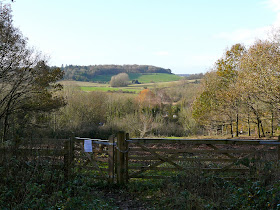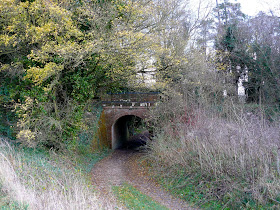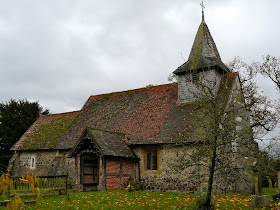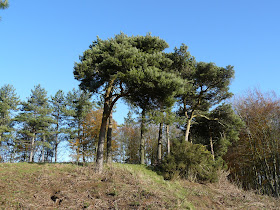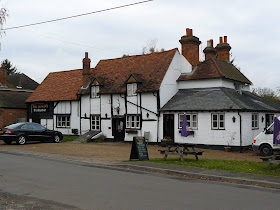En route for Gloucester, I followed my normal practice of diverting to find a walk. However, because I had to be there for 11.30, I had to start this one in Withington before 0900, a new experience.
Although this is officially a pub walk, I started from the church, walked up the road past typical Cotswold cottages ....

... and soon turned off on a climbing path across fields to reach a ridge crossed by power pylons at 220m. This was a climb of about 60m, and the reward was a fine view back to Withington, nestling in the Coln Valley. I walked along part of the Coln in August at Fairford, on another trip to Gloucester.

From here, the route led across a large field with Withington Woods on the left to intersect a track which leads into and then round the back of the woods. In a hollow, you turn left into the woods and follow a pleasant woodland path through a great variety of trees.

Eventually, you emerge to again see the Coln Valley.

Here the path traverses the upper slopes just below the tree line, offering delightful views towards Withington and back along the valley - just a shame about the pylons.

Eventually, you rejoin the path you climbed by and use it to return to the village. The church of St Michael and All Angels is of Norman origin, but took its present form in the 13th, 14th and 15th centuries.

From: Pub walks in Gloucestershire by Nigel Hammond (Countryside Books). I must say that the sketch map - a weakness of this series - was woefully inadequate to provide any guidance for this walk. And the directions on first reaching the ridge were pretty vague too. However, my OS map saved the day.
Distance: 4 miles.
Map: OL45 (The Cotswolds).
Rating: three and half stars. A good workout, nice views, very muddy in the woods.




